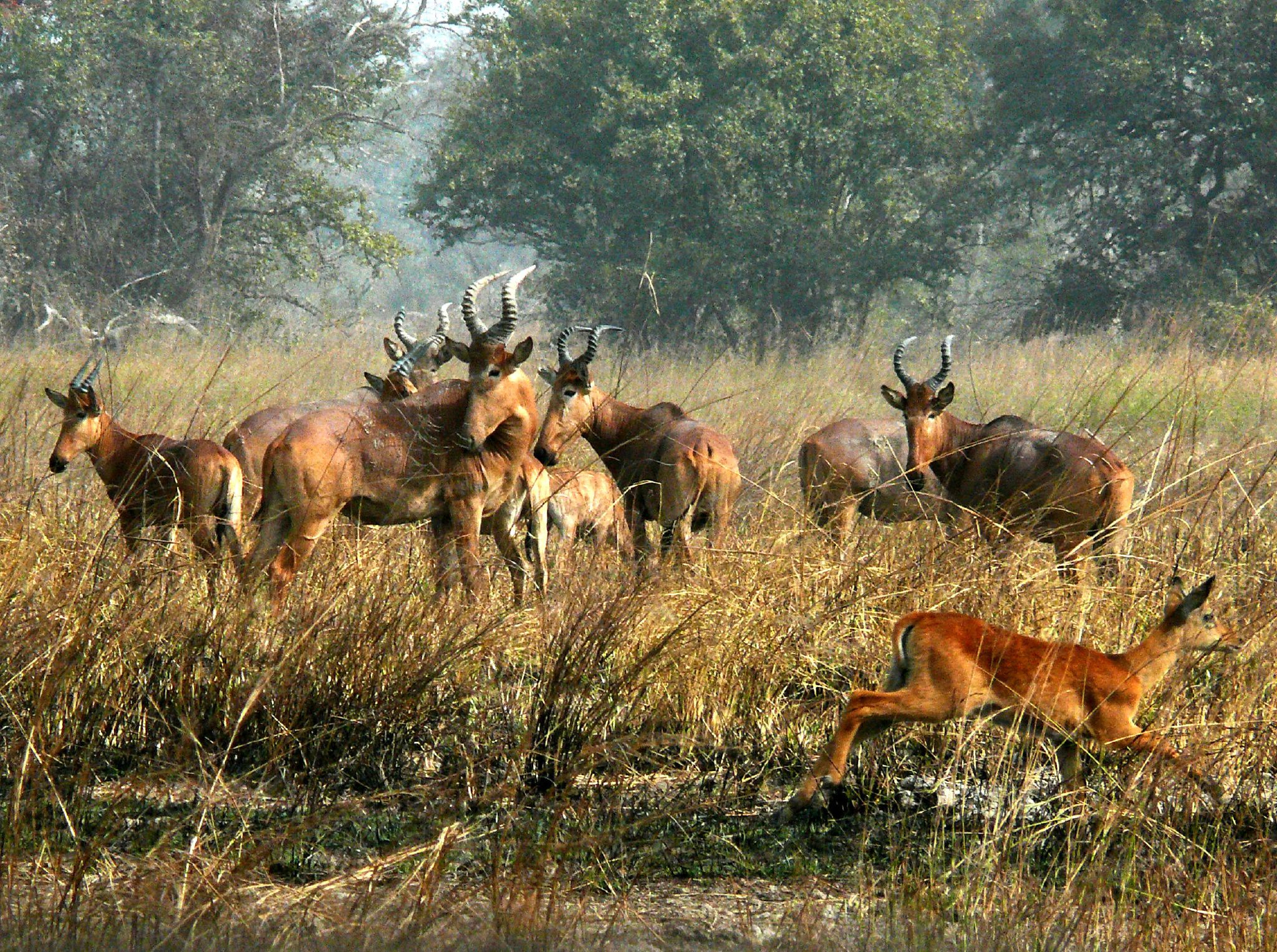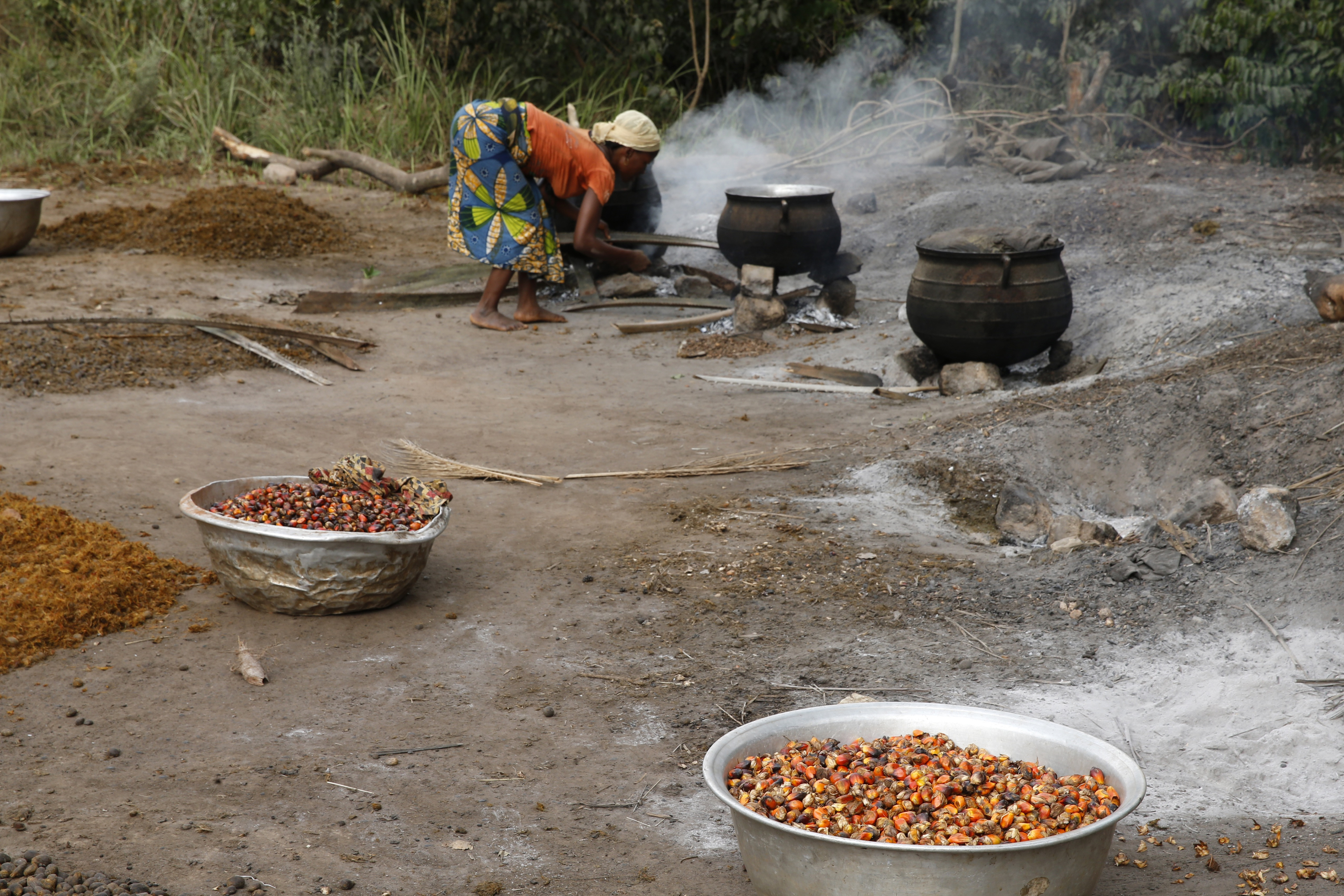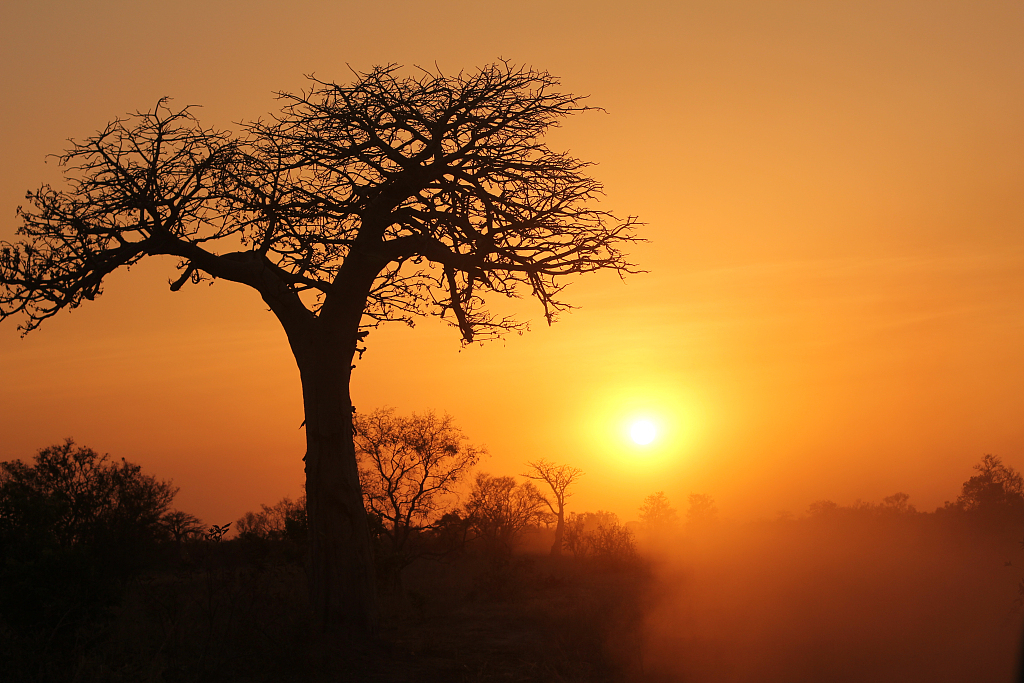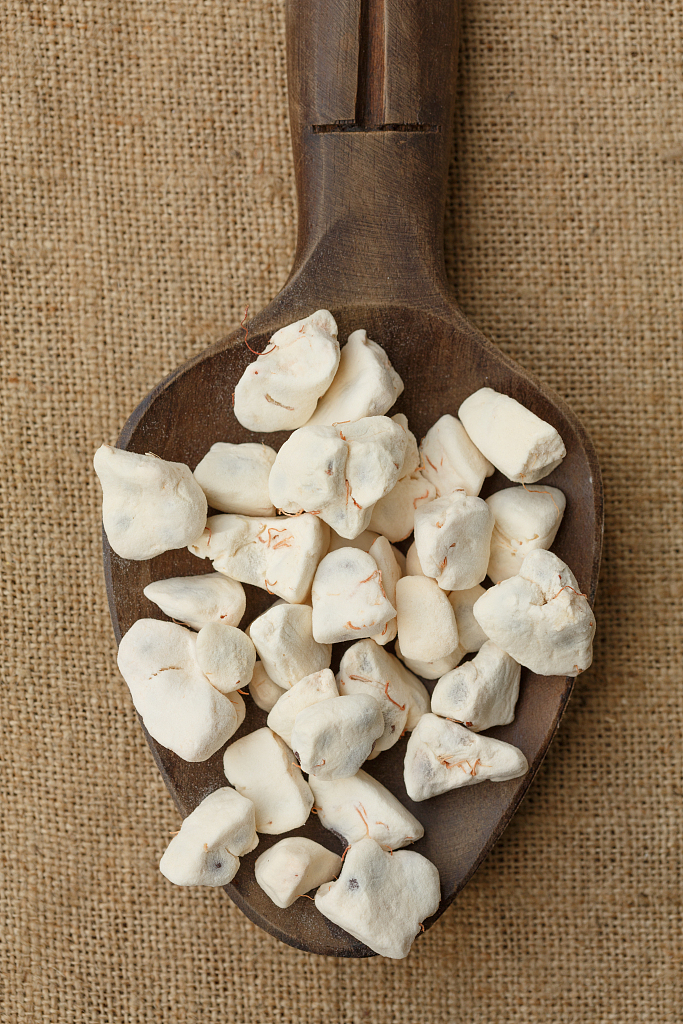
Most travelers have heard about great national parks such as Masai Mara and Serengeti located respectively in Kenya and Tanzania, but do you know Benin, a narrow, north-south strip of land in West Africa, also has one of the finest wildlife reserves? The Pendjari National Park, which lies in north western Benin, is home to some of the last populations of African forest elephants, West African lions and buffaloes.

Wild Kob running at Pendjari National Park, Benin. /VCG Photo
Plus, if you are a plant lover, you may also like to visit the Botanic Garden of Papatia located in Papatia, Sina-Issire, northern Benin. It contains hundreds of herbaceous species and more than 100 woody plants. There is also a tree-nursery in the garden to help increase the number of rare species.
In this article, we talk about two plants of great economic value in this country.
Oil palm

Workers making palm oil in Benin. /VCG Photo
Oil palm was Benin's first export industry and has played an important role in the country's economy since the establishments of palm oil plantations in the 19th century. The plant, which is native to west and southwest Africa, is used in commercial agriculture particularly for the production of palm oil.

The crops provide a source of income for the poor in Benin. /VCG Photo
Palm oil can withstand extreme deep-frying heat as it contains more saturated fats. However, the large-scale cultivation of palm tree has a negative impact on the biodiversity of rain-forests, the palm oil plantations are under increasing criticism for its harm on the environment, especially in Indonesia and Malaysia, two major producers of palm oil.
But the situation is a bit different in Benin as the production is still undertaken on a small scale by female workers, individually or with the help of their family members. The crops actually provide a source of income for the poor.
Baobab

African baobab. /VCG Photo
The baobab tree is known as the African Tree of Life. It can provide food, water and materials to make ropes and clothes for people living in the African Savannah regions. Its fruit, called "monkey bread" is about the size of a coconut. It's nutritious-rich and is a great source of Vitamin C.

Baobab fruits on a wooden spoon. /VCG Photo
People in Africa have been using baobab fruit as an ingredient in cooking for a long time, including juices made from the pulp, sauces made from powdered leaves. Many think the super fruit has a huge potential in the international market. Baobab dried fruit pulp has been acknowledged as a novel food by the European Union.
About 'Plants & Nations'
"Plants & Nations" is a series of articles and pictures about common plants in the world. It serves as a guide to beautiful plants from different countries.
For more articles, pleas click here:
(Top image via VCG)
(If you want to contribute and have specific expertise, please contact us at nature@cgtn.com.)

Copyright © 2018 CGTN. Beijing ICP prepared NO.16065310-3
Copyright © 2018 CGTN. Beijing ICP prepared NO.16065310-3